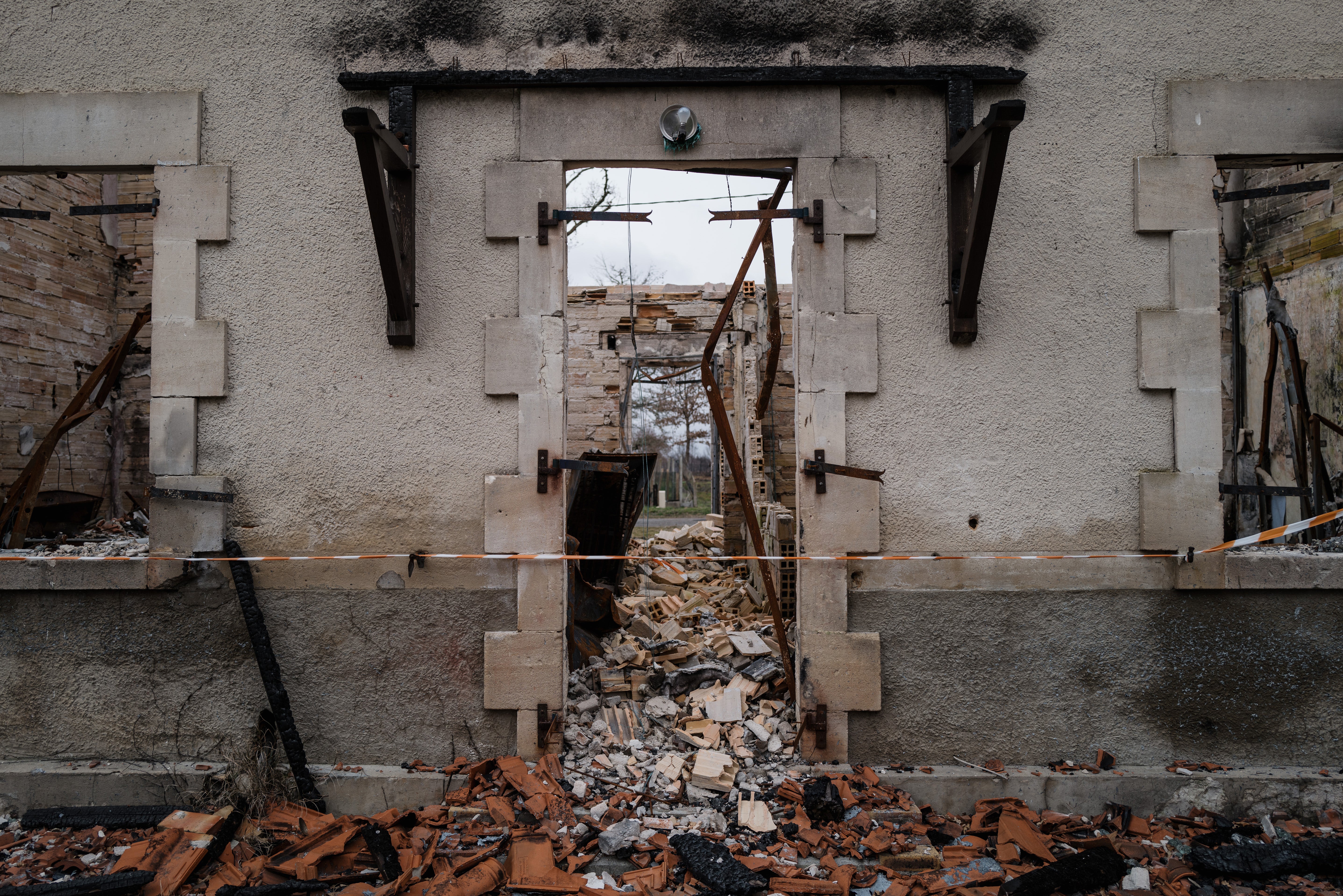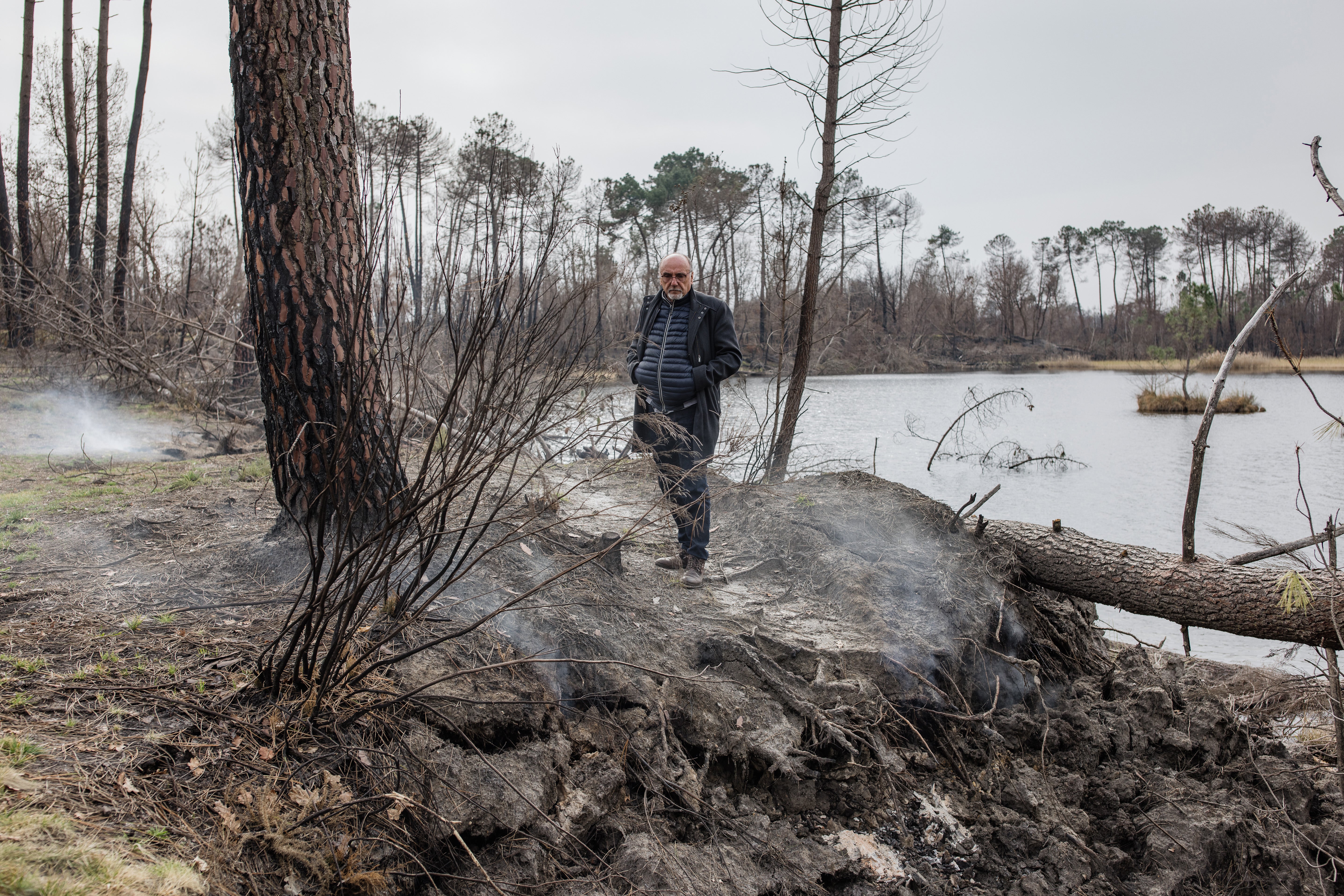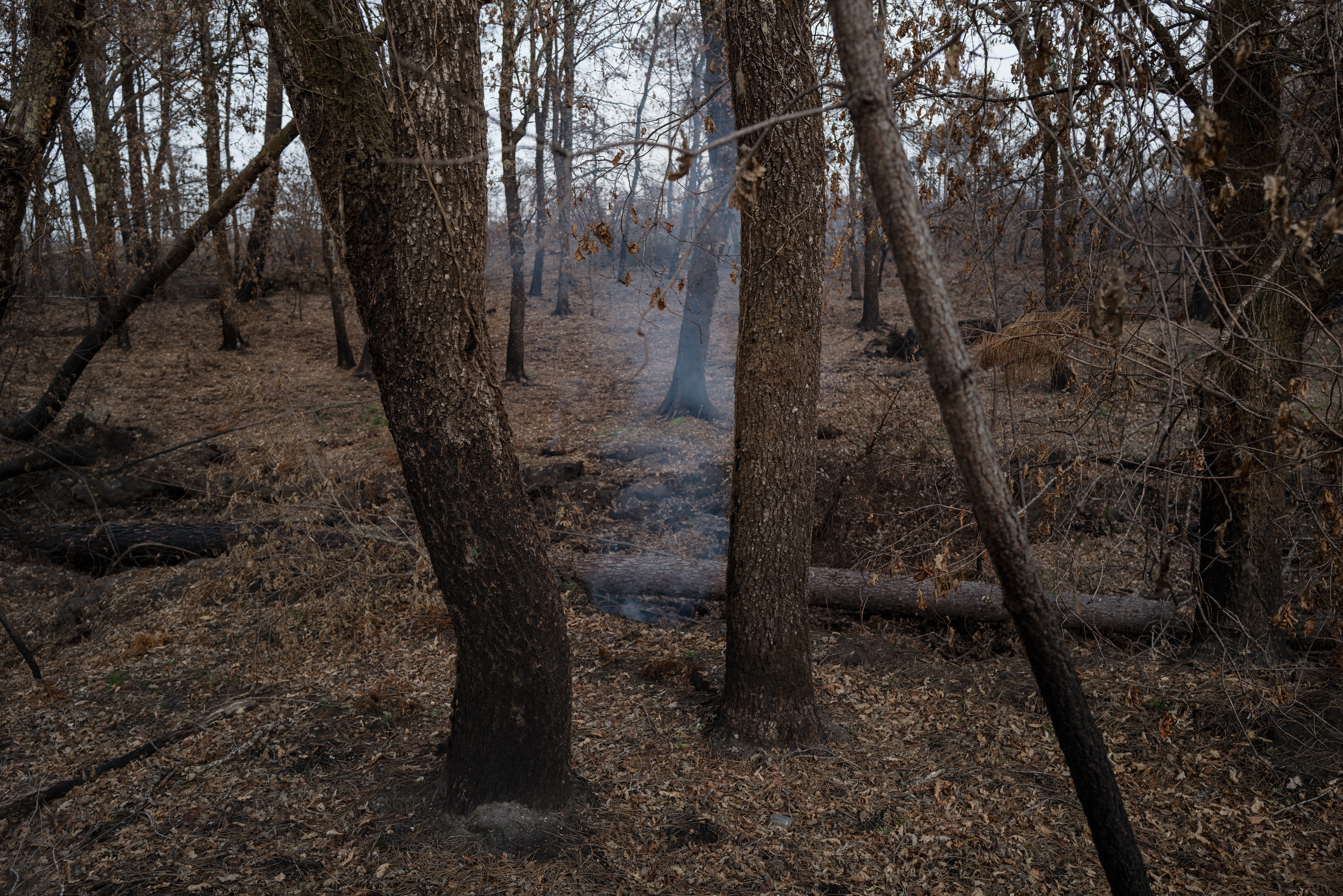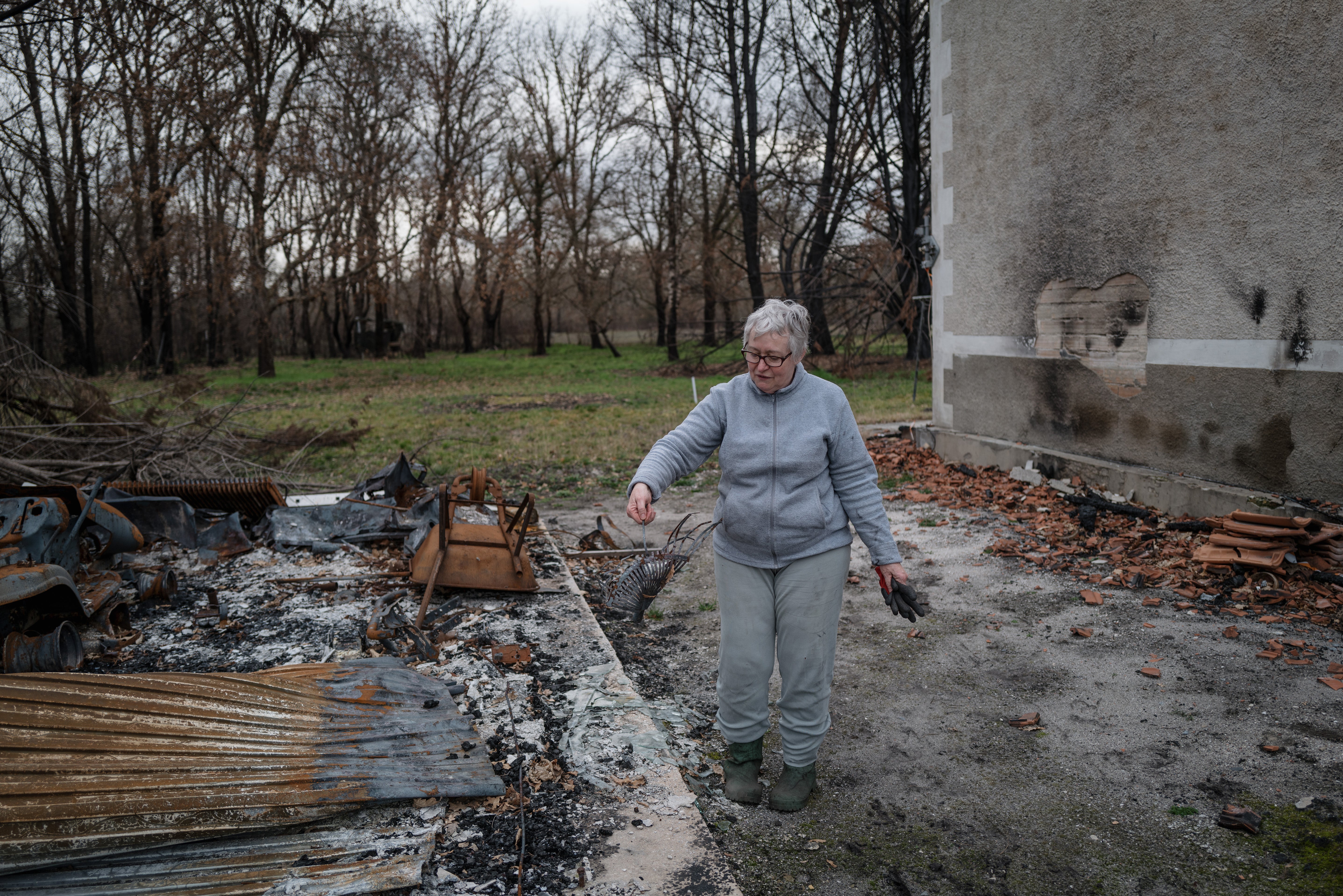The ‘zombie fire’ in France that’s been burning since summer
After a massive wildfire in Bordeaux’s wine region spread to a disused mine containing combustible lignite, officials hoped seasonal rains would extinguish the still-smouldering embers – until the country experienced a record dry spell. Rick Noack reports

In the pine forest around Bordeaux, winter usually brings a respite for nature, with thick clouds carrying misty rain from the nearby Atlantic Ocean. After a historic heatwave, an extended drought and a “monster wildfire” wreaked havoc here in southwest France last summer, that seasonal soaking would have been especially welcome. But the reprieve has yet to arrive.
A touch of rain toward the end of February ended 32 consecutive days without any significant precipitation in France, the longest period since record-keeping began, in the 1950s, according to the public meteorological office. The country’s drought, though, is ongoing, hitting Bordeaux – historically among France’s rainiest parts – particularly hard. And the remnants of last summer’s monster, which ripped through the forest and forced tens of thousands to evacuate, are still burning.
Researchers and French officials say what’s known as a “zombie fire” is smoldering underground. It has spread to the site of a former lignite mine, inactive for decades, but with plenty of the highly combustible mineral remaining. Near the mine, the fire is visible as plumes of smoke. In one spot it reemerged with flames, requiring the attention of emergency crews last month.
There are new fires, too. Blazes in late winter or early spring are not a novelty in the region. But this year’s winter fires have surprised with their “unusual intensity”, says Marc Vermeulen, head of the regional fire and rescue services. Strong winds and dry soil have turned small fires into rapidly spreading blazes within minutes.

“It has already started again,” resident Martine Leveque, 67, says as she surveys the charred ruins of her brother’s house – burnt to the ground just hours after he was evacuated in August. “It’s scary,” says Leveque, staring at a melted metal box, once a fridge, and considering the prospect of worse fires to come.
“As climate change intensifies, the concept of a fire season is going to lose its meaning – or at least it’s going to be a much weaker concept,” says Victor Resco de Dios, a forest scientist at Spain’s University of Lleida.
For those tracking signs of climate change, this has been a worrying winter across much of Europe. Unusually warm weather and the absence of snow in December and early January forced the temporary closure of ski slopes in the Alps.
Our firefighters fought hard in 2022. Seeing the prospect of fires reappear at an early point in the season surely affects them
Next came the dry spell that has affected all of France, along with parts of Italy and Spain. Italy’s largest lake, for example, has dropped to a 30-year winter low. In France’s Gironde region, where Bordeaux is located, many streams are running dry at a time when the sandy soils should be soaking up water.
Historically, this was a marshy region. The land was so watery that local shepherds managed their flocks while walking on stilts. The pine forest is entirely manmade. In the 19th century, the French government decided to drain the land and plant pine plantations, which both helped prevent erosion and supported the creation of jobs in the timber and resin industries. The forest turned out to be good for grape-growing, too – shielding vineyards from harsh ocean winds.
But those human alterations to the landscape “made what was once a fairly fire-resistant landscape much more flammable”, says Thomas Smith, an environmental geography researcher at the London School of Economics. And climate change is now further elevating the risk, he says.

When Leveque’s brother was moved from his home in the early morning hours on 10 August – with the approaching flames already casting the landscape in a menacing red light – he didn’t fully realise that it might be the last time he would see the house standing. Six months later, reality has settled in. “He wants to return home,” she says. But there isn’t much to return to. Before the house can be rebuilt, the ruins will need to be bulldozed. The recovery will take years.
A French flag hangs defiantly from a neighbouring house that escaped the flames. Around it, the landscape still looks dystopian, with piles of burnt logs lining roads that were deformed by the flames.
Jean-Luc Gleyze, the president of the surrounding Gironde department (a governmental area), says the area is becoming a “climate risk laboratory”. As climate change-related disasters are becoming more apparent during all seasons here, he worries about the impact on morale. “Our firefighters fought hard in 2022. Seeing the prospect of fires reappear at an early point in the season surely affects them,” he says, calling for more support from the French government.
Over the past five years, wildfires have burnt more than 150,000 hectares of land in France – four times as much as in the five years prior, according to EU statistics. Climate change models predict they will become more frequent, including in the winter months. By the end of this century, the fire season in the Mediterranean basin – which borders the region – is projected to be 45 to 90 days per year longer than it is today, says Resco de Dios, the Spanish forest scientist.
The question we are asking is: aren’t we ahead? Isn’t the risk of fire rising a lot faster?
Winter fires will likely remain smaller than the infernos seen in recent summers. Such summer fires are usually shaped by a level of heat and solar radiation that won’t be matched in winter, says Florent Mouillot, a research director with France’s IRD-CEFE lab in Montpellier.
In some ways, closely monitored winter fires could even be an opportunity, some argue, because areas that burn in colder seasons are unlikely to catch fire again the following summer. “It’s better to have fires at low intensity in winter than high-intensity fires in the summer,” Resco de Dios says.
But an almost year-round fire season could have severe repercussions for biodiversity and wildlife. It could also stretch emergency resources to a breaking point.
With many of its firetrucks still damaged from last summer, the Gironde region has borrowed equipment from another French unit. But the loaner engines need to be returned before the summer – when the need here is expected to be even more urgent than it is now.
Confronted with concerns from local officials, the French government has launched a task force to examine broader moves that might be necessary, from the purchase of additional firefighting aircraft to the choice of trees that should be planted.
Firefighters worry that projections anticipating a gradual rise in fire risk may already be outdated. “The question we are asking is: aren’t we ahead? Isn’t it going a lot faster?,” says Vermeulen, the head of fire and rescue services in Gironde.

One of the big questions in Gironde remains what to do about the burning coal mine.
In recent decades, the spot had been popular for hiking. Now, it’s cordoned off, the wooden picnic tables that survived the fire deserted. Several people who slipped on the smoldering ground suffered burn injuries, according to Jean-Louis Dartiailh, mayor of the nearby village of Hostens.
Drones regularly hover overhead the site, using heat sensors and cameras to track the spread of the underground fire. The dull sound of charred trees being felled echoes across the adjacent lake.
Soil by the water has registered temperatures of up to 700 degrees Fahrenheit – and in some parts, the temperatures continue to rise, said Franck Uteau, a government engineer who has monitored the site.
Officials in the Gironde department, which is responsible for the land, are still hoping spring will bring rain and extinguish the fire.
But Kirsten Thonicke, a researcher with the Potsdam Institute for Climate Impact Research, says there may be no easy fix. In the absence of heavy precipitation, killing the fire would likely require pumping “in a lot of water, to re-wet the dry wetland, and to make sure that the heat is taken off”.
That’s the preferred option of Dartiailh, the mayor, who last week was cautiously walking around the ravaged forest – at one point almost sliding into a smoldering hole in the ground. He said he worries that the impact on his community goes beyond physical destruction and injuries.
Children in the region were traumatised by last summer’s fire, he says. Now their parents ponder if they should mention its remnants. “Should we tell them about this? I’m not sure.”
© The Washington Post






Join our commenting forum
Join thought-provoking conversations, follow other Independent readers and see their replies
Comments